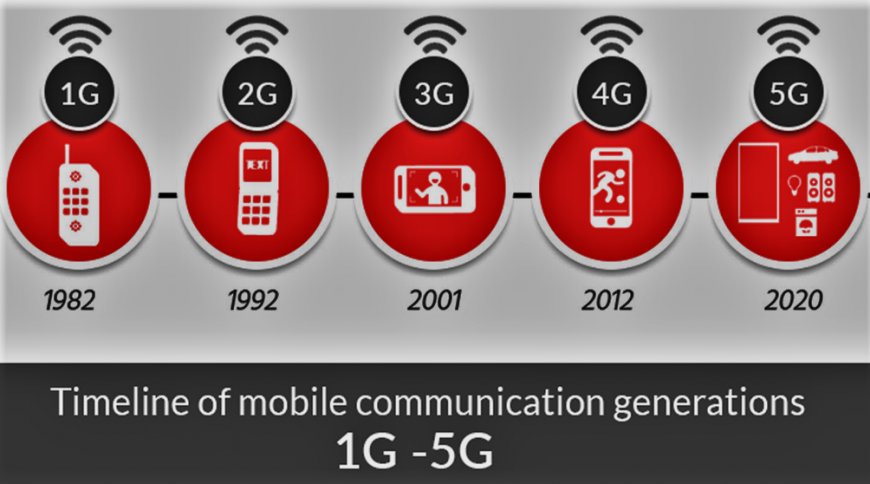5G: A Mobile Network Evolution? Everything you need to know.
5G is designed to deliver peak data rates up to 20 Gbps based on IMT-2020 requirements. Qualcomm Technologies’ flagship 5G solutions, the Qualcomm® Snapdragon™ X65 is designed to achieve up to 10 Gbps in downlink peak data rates.

5G is the 5th generation mobile network, build on the foundations laid by 1G, 2G, 3G, and 4G in a new global wireless standard networks.
5G enables a new kind of network that is designed to connect virtually everyone and everything together including machines, objects, and devices.
https://twitter.com/ExpressTechie/status/1686707801408901120
A decade after the launch of 4G, the telecom industry is buzzing with excitement about 5G. This next generation of mobile connectivity brings faster speeds and more reliable connections—up to 100 times faster than today's typical connection.
Building on the foundations laid by 1G, 2G, 3G, and 4G, 5G stands as the fifth generation of mobile network technology, and it brings a host of groundbreaking improvements. While 1G, 2G, 3G, and 4G networks have played crucial roles in advancing communication over the years, 5G takes connectivity to an entirely new level.
It delivers unparalleled speeds, reaching multi-Gbps peak data rates, allowing for lightning-fast downloads, smoother video streaming, and seamless real-time interactions. One of the most notable features of 5G is its ultra-low latency.
With virtually no delay in data transmission, 5G ensures a responsive and lag-free experience, particularly important for applications like online gaming, augmented reality, and remote-controlled devices. Beyond speed and latency, 5G boasts massive network capacity.
The increased bandwidth can support a massive number of connected devices simultaneously, making it ideal for the ever-expanding Internet of Things (IoT) ecosystem. This means not only smartphones and computers but also a vast array of everyday objects, machines, and devices can be interconnected seamlessly, paving the way for the realization of smart cities and smart infrastructure.
Moreover, 5G ensures greater reliability and availability, making it more dependable in critical applications like remote healthcare, autonomous vehicles, and mission-critical industrial processes. It opens the door to advancements in various industries, enabling innovations that were previously impractical or impossible.
The impact of 5G extends far beyond conventional communication. It has the potential to revolutionize entire industries, giving rise to new business models and empowering a new wave of user experiences. From safer transportation with enhanced vehicle-to-everything (V2X) communication to digitized logistics with real-time asset tracking, 5G creates possibilities that seemed like science fiction just a few years ago.
How to turn your phone from 4G to 5G network
1. Go to Settings on your phone.
2. Head to the 'Network & Internet' option. Tap on it.
3. Now click on SIM option.
4. Select Preferred Network type and under that, choose 5G.
5. And that's it! 5G will be enabled on your phone.
6.
According to the history of wireless data and how each generation has worked, First generation was 1G in 1980s and it 1G delivered analog voice.

Second generation was 2G Early 1990s and the 2G introduced digital voice (e.g. CDMA- Code Division Multiple Access).
Third generation was 3G Early 2000s which brought mobile data (e.g. CDMA2000).
Fourth generation was 4G LTE 2010s and its on record that the 4G LTE ushered in the era of mobile broadband.
5G is designed to deliver peak data rates up to 20 Gbps based on IMT-2020 requirements. Qualcomm Technologies’ flagship 5G solutions, the Qualcomm® Snapdragon™ X65 is designed to achieve up to 10 Gbps in downlink peak data rates.
What's Your Reaction?
















































































